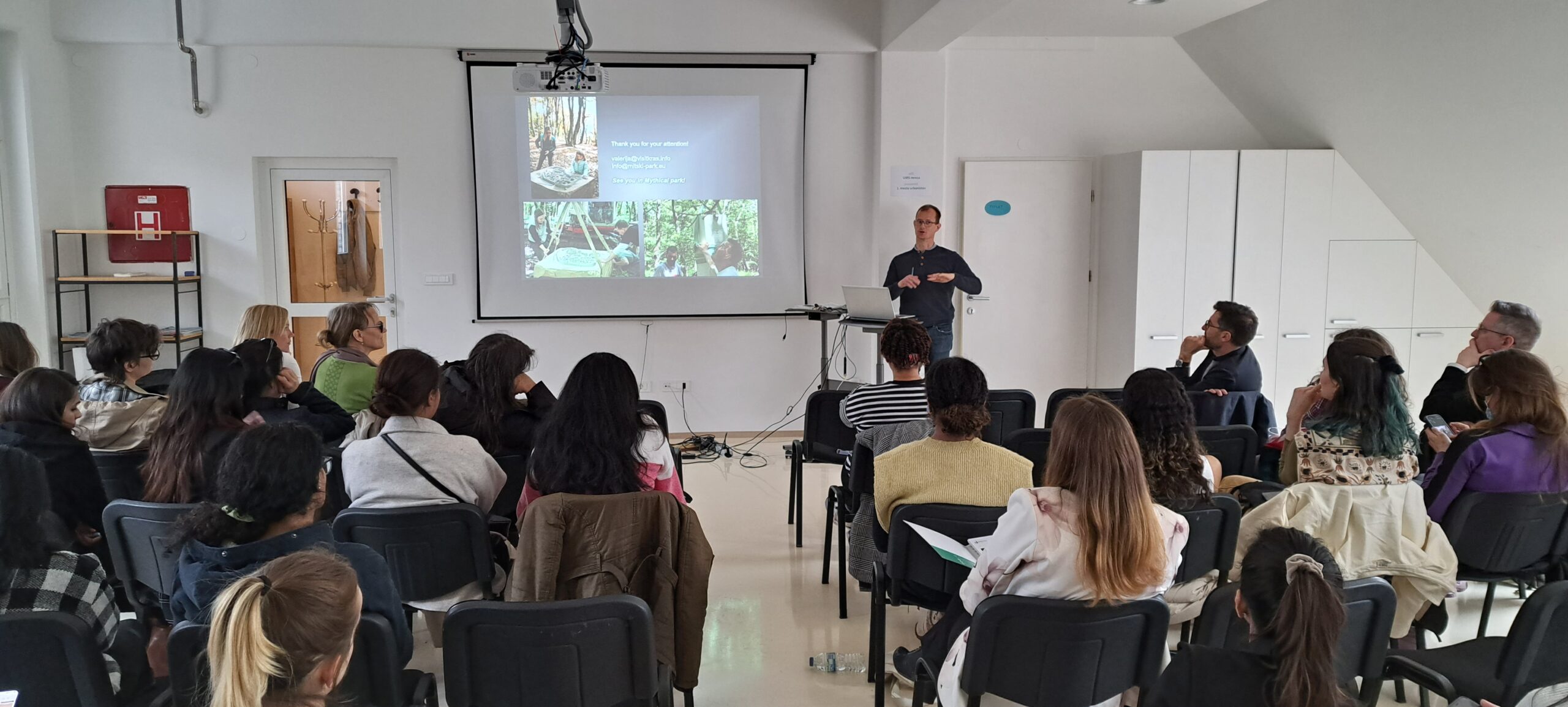SMOTIES Travelling Talks series’ Talk Small Places, Great Ideas – Placemaking in Remote Communities explored how communities, from Morocco to Slovenia, are using public spaces to address climate change, revive traditions and foster social connection.
MAIN PARTICIPANTS:
- Matej Nikšič (moderator)
- Nina Goršič (speaker)
- Giulio Verdini (speaker)
- Urška Sešek (speaker)
- Valerija Pučko (speaker)
1 An introduction to the SMOTIES project by Nina Goršič (UIRS, Human Cities network):
- The project’s focus on exploring how communities in remote areas can collaborate to create or improve public spaces.
- The importance of the creative sector in these placemaking efforts.
- The project’s findings and best practices from various European countries.
2 Climate change adaptation strategies in rural Morocco by Dr. Giulio Verdini (Reader in Urban Planning, School of Architecture and Cities, University of Westminster; Visiting Professor, Mohammed VI Polytechnic University, Morocco):
- The challenges faced by a specific rural town in Morocco due to climate change, such as increased heat and reduced rainfall.
- The strategies being implemented by the local community and municipality to adapt to these changes. This could involve water management solutions, alternative agricultural practices, or even redesigning public spaces for better heat mitigation.
- The potential for these strategies to not only ensure the town’s survival but also create opportunities for a more sustainable future.
3 The Village Garden in Smlednik, Slovenia by Urška Sešek (Society for Oral History):
- How the community revived a historical community garden with a focus on permaculture practices.
- The garden’s role in fostering social interaction, knowledge exchange and a sense of community among residents.
- The challenges and successes faced by the project, potentially including overcoming the disruptions caused by the pandemic.
4 The Mythical Park in Rodik, Slovenia by Valerija Pučko (Park Manager):
- The park’s unique concept of highlighting the village’s rich intangible cultural heritage through art installations and hiking trails.
- How local stories and myths were collected and incorporated into the park’s design.
- The collaborative effort between the local community, artists, and experts that led to the park’s creation.
- The park’s potential for promoting sustainable tourism while preserving and celebrating local traditions.
